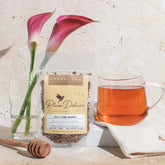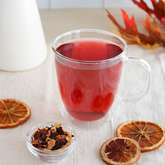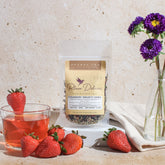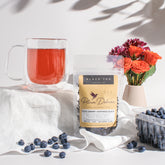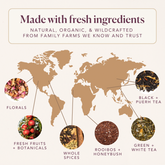If you're a fan of making iced tea, you'll love kouridashi iced tea—assuming you have the patience!
Whether you're looking for a way to level up your cold brews or just want a refreshing summer drink, kouridashi tea won't disappoint. You'll get more flavor with this brewing method and a smooth brew that never results in bitter tea.
Let's get started with how to make amazing tea—kouridashi style.

What is Kouridashi?
Kouridashi is a cold brewing technique that involves brewing tea with ice.
Kōri (氷) means ice and dashi (出汁) typically refers to a broth or other extracted liquids that are meant to draw out umami flavors, which are best described as being a bit savory. Certain types of tea can taste more savory, especially when you cold brew them.
Iced Tea for the Patient Tea Lover
You've probably heard of cold brewing—brewing tea in room temperature or cold water, without ever exposing them to hot water. Cold brewing is a great way to extract the more delicate flavors of tea, getting a more well-rounded, smoother brew in the final cup of tea. (If you've only heard of cold brew coffee, it's the same thing, just with tea leaves.)
Kouridashi is another way to cold brew tea, a method loved by only the most patient tea-drinkers. It takes a couple of hours to prepare a cup of tea this way, but on the upside, you can't over-steep it.
Low-Caffeine Cold Brews
Another advantage of kouridashi iced tea is the lower caffeine content. (I guess if you're going for caffeine in the morning, this might not be a pro in your book!)
Without hot water to break down the tea, kouridashi tea doesn't have as much caffeine. Tea already has somewhat low caffeine content, so this can reduce it even more if you're someone who's very sensitive to caffeine.

What's the Difference Between Kouridashi Tea and Regular Cold Brews?
Unlike regular brewing methods, you won't get much of the bitter taste that comes from tea tannins. Steep away to your heart's content—you could leave tea in cold water for a day or two with little to no bitterness! (This is true for cold brews in general.)
The kouridashi brewing method isn't too different from regular cold brew—the concept is the same. Steep tea slowly, without hot water, and you'll see some of the more subtle flavors start to emerge.
Kouridashi tea takes longer to prepare since it's colder. It's usually reserved for delicate, high-quality tea, often green, white, or other delicate teas (like first flush Darjeeling). In the time it takes the ice to melt, you'll have a lovely, well-rounded flavor. You'd be surprised at what flavors come forward—some teas end up tasting more savory than anything.
How to Prepare Kouridashi Tea
Steeping tea over ice can take a while, so be patient! (If you're like me and often forget you left your tea steeping anyway—this is your time to shine.)
- Put a teaspoon of tea leaves in a small mug or glass. (I like to use a cocktail shaker, which makes it easy to sweeten and strain the tea.)
- Fill the cup to the top with ice cubes. (Regular ice cubes are fine, but I like the large ice cubes you serve whiskey with.)
- If you like your tea a little stronger (or are using a larger cup), you can put a second teaspoon of tea leaves over the ice.
- Let the ice melt.
- Once the ice melts, strain the tea and drink up!
Depending on how much ice you're using, it can take a few hours for the ice to melt. I've found that the longer it takes, the better the tea!
One of the highlights of the kouridashi method is just that—how long the tea takes to brew.
You get a strong, concentrated flavor without bitterness or loss of flavor. You'll also get some new flavor profiles with this process.

Which Teas Are Best for Kouridashi?
In general, you'll want high-quality tea leaves from a source you trust. Kouridashi tends to bring out a lot of the flavors of the tea itself, so it's important to start with good tea leaves. Stick to what you like at first, since kouridashi tea is more concentrated.
All of the teas featured in our iced tea collection are great for kouridashi tea. This list will give you plenty to choose from.
Green Tea
Full leaves work best—the long, full leaves of green tea work really well. Gyokuro is one of the most popular teas to use, but you'll find green teas, in general, do nicely, especially if you're a fan of the sweet, earthy flavor profile associated with green tea.
One of my favorites right now is our Tropical Vacation green tea, a spring seasonal tea that's basically a green tea take on a piña colada with strawberries. No sweetener needed!
Citrus Mint green tea is another wonderful blend for kouridashi, especially if you want a refreshing twist of lemongrass, spearmint, and orange peel. I can never get enough mint, so I always let it steep with fresh mint.
If you want something more traditional, Hope Blend green tea is a classic green tea blend with jasmine flowers.
White Tea
Fruity, white tea also works nicely, especially if you want to highlight the combination of earthy and fruity flavors.
White teas need to be brewed at lower temperatures anyway. Cold brewing eliminates the risk of over-brewing these delicate teas.
Lavender Daydream is a favorite, with mango, peach, and floral notes. If you like fruity tea in general, you'll likely take to any of the white tea blends. Cold brewing is the perfect way to highlight their unique flavor profiles.
Fruity Tea
Fruity teas like Magical Butterfly herbal tea make wonderful summer treats when iced down. This particular one features apple pieces, an assortment of berries, and other things like rose hips, hibiscus, and citrus to make it just a little tart. It looks beautiful over ice and turns a vivid purple with a little extra lemon juice. (On its own, it's a nice reddish-purple due to all the citrus in this tea.)

How to Sweeten Kouridashi Tea
As you probably know, sugar doesn't dissolve in iced tea very well, no matter how much you shake it! Sweetening cold brews in general can be a little tricky.
If you like honey, you can use it to sweeten cold tea with enough shaking. I usually cold brew tea in the cocktail shaker anyway, so I just add my sweetener, give it a good shake (at least 30 times), and strain it.
Simple syrup is a little easier to use. It's easy to make if you don't have any on hand, and you can flavor it with your favorite herbs and florals.
Cream and some non-dairy milks will add a little bit of sweetness to your tea and it mixes in much easier than thick sweeteners.
Most teas you would use for kouridashi are already a little sweet, making a nice, naturally sweet tea. But if you need to sweeten them more, simple syrup or sweetened cream are usually the easiest things to mix in cold tea.

Tasting Notes with Kouridashi
One last thing—the teas made using this slow cold brewing method tend to bring forth flavors you may not have noticed before. This is a great time to break out a journal for tasting notes. The Tea Moments Journal includes a flavor wheel and an area for some quick notes on the tea and any pairings you loved. (More on how to use the flavor wheel in this post.)
If you already have a couple of journals, take note and compare how the tea tastes brewed kouridashi-style and which brewing method you prefer. (There are definitely some breakfast teas I prefer to brew hot, as I like the bold, bitter flavor that sometimes gets lost with kouridashi!)
Ready to get started? Get a tea from our iced tea collection and try it for yourself!
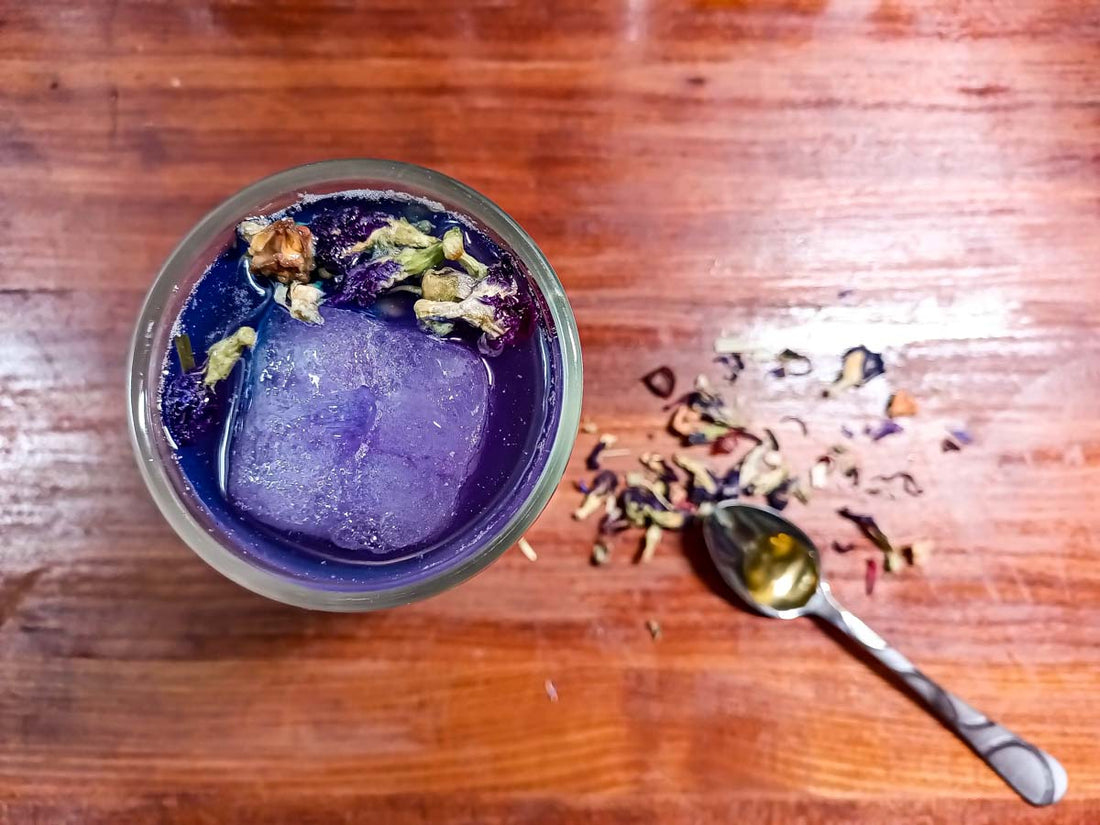
![Holiday Tea Variety Pack [6-Pack Variety of Flavors]](http://www.plumdeluxe.com/cdn/shop/files/holidayTeaVarietyPack.png?v=1759777907&width=165)


